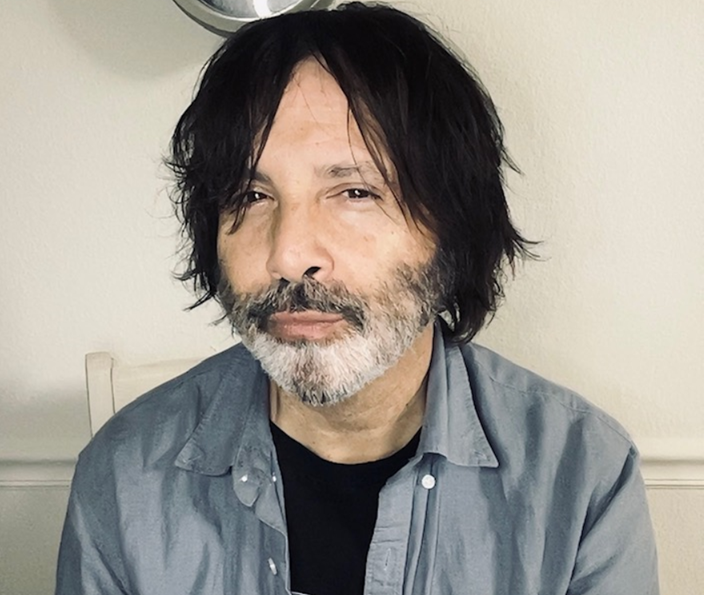Peter and his wife Linda were married for 37 years. They spent most of that time in his family’s old farmhouse in Maine, a place where the light changed slowly and the silence meant something. They walked their dog, Harry, through meadows behind the barn. They played scoreless ping-pong in the barn itself, just volleys back and forth, laughter rising through the rafters. They wrote silly poems and left them in one another’s coat pockets. If anyone had asked them, “Which year was the best of your life together?” they would have smiled and said, “How could we choose just one?”
The best Sundays, Peter would tell you, were the ones when the phone didn’t ring all day.
Linda died suddenly at 61. In the weeks and months that followed, time lost its shape. Grief settled in. Not in thunderclaps, but in small quiet ways. The dog’s empty leash. The cold half of the bed. A morning coffee that no longer had a companion cup.
Peter took a step back. Not from life, exactly, but from striving. He had spent years leading companies as CEO and CFO, guiding teams through crisis, stabilizing what felt unsteady. But after Linda’s death, he let things be still for a while. The urgency faded. The calendar cleared. He gave himself space.
And then, slowly, the desire returned. Not just to work, but to contribute. To create something lasting. Something that mattered.
Trying to Begin Again
Eventually, Peter opened his laptop. He updated an old résumé, combed through job postings, and tried to begin again. He applied to a few roles — some CEO, some CFO — each one a variation on what he knew best: organizations in trouble, numbers out of balance, people uncertain where to turn.
But the silence that followed was deafening. No callbacks. No acknowledgments. Just a blinking inbox and the sense that he had become invisible.
He couldn’t help but wonder: Was it the gap? His age? Had the world moved on without him?
He didn’t need to be needed, but he did need to be seen.
To make matters harder, the process itself felt alien. Conversations, when they came, were brief and impersonal. Peter knew how to run a turnaround and steady a boardroom. But how to begin again in a world where job search felt so transactional?
A Different Kind of Conversation
One afternoon, scrolling through LinkedIn, Peter came across a short video from ExecuNet. It featured a recruiter — now a career strategist — speaking plainly, and with surprising warmth about how senior executives often feel invisible in today’s hiring landscape, and how it didn’t have to be that way.
He scheduled a call.
He wasn’t sure what to expect; maybe a wall of jargon, or a quick rundown of everything he was doing wrong. But instead, the conversation felt like a deep breath. The strategist on the other end didn’t rush him. She didn’t start with bullet points or buzzwords. She started with a question: “Tell me what brings you here.”
Peter found himself talking about Linda. About how he didn’t want to coast or fade, and still wanted to make a difference.
“She sounds extraordinary,” the strategist said. And then: “Let’s build something that honors her.”
Building Something That Matters
That conversation didn’t just offer reassurance; it set something real in motion. Peter wasn’t searching alone anymore. He had a team, his team, devoted to building a campaign with clarity and purpose. He called them The Workbench, after the old pine table in the barn he and Linda used to fix things, build things, and dream a little.
The Workbench team included recruiters turned strategists, executive coaches, writers, and designers. All focused on helping Peter move forward with intention and strength.
- Defining and Expressing His Value Story
Peter’s team helped him uncover the thread that tied his career together, not just the roles he held but the real impact he made. He wasn’t there to hold a title. He was there to steady the ship. To calm the storm. His value story became clear: he helped organizations find their footing again.
Together, they brought that story to life across every part of his campaign: from résumé and LinkedIn profile to outreach messages and interviews. Everything aligned around a simple, powerful message: Peter was ready to lead with purpose, and he knew exactly how to bring financial stability and clarity to the companies that needed it most.
- Identifying Target Roles and Organizations
Peter wasn’t looking for prestige; he was looking for purpose. With guidance from The Workbench, he identified organizations with 20 or more employees: mission-driven, remote-friendly, and facing the kind of financial and leadership challenges he was built to solve. The goal: to land a CEO or CFO role with meaningful impact, ideally in the $275K+ range. - Strategic Networking and Outreach
Peter’s team helped him rethink outreach. They showed him how to re-engage former colleagues and board contacts with warmth and focus. Not with mass blasts, but with thoughtful, personal messages that told his story and invited conversation. - Using AI Intelligently
AI became a quiet asset: not for writing résumés, but for helping Peter research the market. His team used AI to identify patterns across companies, understand leadership gaps, and sharpen the targeting of his outreach. Together, they built a system to stay focused, agile, and informed, without losing Peter’s human touch. - Interview Preparation and Coaching
They rehearsed interviews, not to script answers but to let Peter’s clarity and compassion shine. He practiced saying what was true: I’m here because I still have something to give.
The Breakthrough
Weeks passed. There were conversations, referrals, invitations to connect. Then came an opportunity that felt right: a growing company facing financial instability, leadership turnover, and uncertainty about the future. They were remote-first. They needed a stabilizer. A steward.
Peter approached the interviews with quiet focus. He listened more than he spoke. He asked hard questions gently. And when it was his turn to answer, he didn’t pitch. He explained how he would lead: with steadiness, transparency, and care.
Two weeks later, he accepted the role of interim CEO with a $300K+ package and the chance to shape a new chapter for the organization.
A New Kind of Morning
Peter’s first morning on the job wasn’t in a corner office or a conference room. It was in the farmhouse kitchen, sunlight pooling on the wide-planked floor. Harry, the dog, thumped his tail gently against Peter’s chair. Outside the window, the fields shimmered in late-season gold. Peter’s coffee steamed in Linda’s favorite mug.
He had set her photograph just beside the monitor. She was laughing in it, probably at one of their old poems.
The Zoom screen blinked to life. A new team, a new challenge, a new day ahead.
Peter exhaled. He wasn’t chasing glory. He wasn’t trying to prove anything. He was here to contribute. He still had something to give. Helping a company find its footing again felt like a kind of devotion. The life he’d built with Linda had taught him how to lead: with steadiness, with humor, and with care.
He thought of all their quiet Sundays together. The way time could stretch when it was well spent. And as the meeting began, Peter smiled and thought, This is how I want to spend mine.
Sources
- Generation.org, “Age Proofing AI: Research on Bias in Executive Hiring,” 2024. https://www.generation.org/news/age-proofing-ai-new-research-from-generation
- Business Insider, “Older Workers Are Using AI Better Than You Think,” 2024. https://www.businessinsider.com/ai-older-workers-better-than-younger-could-help-hiring-2024-8
- Deloitte Insights, “Redesigning Work for an Aging Workforce,” 2023. https://www2.deloitte.com/us/en/insights/topics/talent/redesigning-work-for-our-aging-workforce.html
- ExecuNet Masterclass Series, “Artificial Intelligence, Executive Jobs, and You,” 2024. https://www.execunet.com/webinar/artificial-intelligence-executive-jobs-and-you-an-expert-panel-discussion







